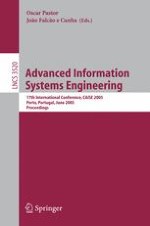2005 | Buch
Advanced Information Systems Engineering
17th International Conference, CAiSE 2005, Porto, Portugal, June 13-17, 2005. Proceedings
herausgegeben von: Oscar Pastor, João Falcão e Cunha
Verlag: Springer Berlin Heidelberg
Buchreihe : Lecture Notes in Computer Science
